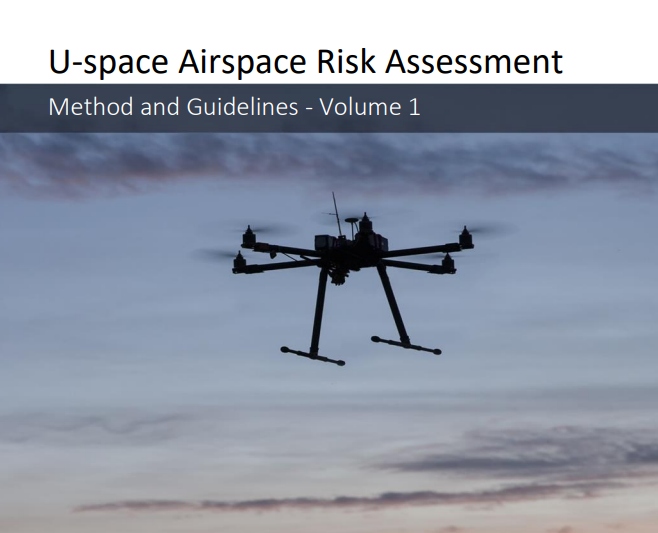The Eurocontrol’s Innovation Hub’s drone programme team has just released its U-space Airspace Risk Assessment Method and Guidelines – Volume 1 document, providing states with written guidance on how to perform the airspace risk assessments (ARAs) required by Commission Implementing Regulation 2021/664 to support the designation of U-space airspace.
This document is the fruit of several years of assisting the agency’s member states to perform such assessments though Eurocontrol’s ‘Support to States’ mechanism, and is fully aligned with EASA’s recently published Acceptable Means of Compliance and Guidance Material (AMC/GM) for Regulation 664.
The method describes a systematic process for conducting an ARA through its three main phases:
- Preparatory Phase: to define the scope of the assessment and the required resources
- Reference Scenario Phase: to compile a full picture of the airspace being assessed
- Assessment Phase: to address safety, security, privacy and environmental hazards, as well as the required risk mitigation measures.
The Preparation phase lays out the scope of the assessment to be performed, brings the core and support teams together, and gathers preliminary information, including regulation, that will form the basis for the data collection in the reference scenario phase.
The Reference Scenario phase gives the context of the change (in this case, the designation of U-space airspace), and will later be used as a basis for the assessment of safety, security, privacy, and environmental concerns. This phase aims to provide a complete description of the airspace under study at the time the assessment is performed. This includes how UAS operations are managed before the implementation of U-space airspace, the different sources of risk to be considered – air risk, risk to people, property and infrastructure on the ground, risk from interference – the different players affected by the change, and the applicable regulation. It is important that the reference scenario phase be complete, and it therefore includes interviewing many stakeholders – often members of the “support team” – to not only validate and complete information found through document study, but to obtain insight into proposed future use of the airspace under assessment.
The output of the Reference Scenario phase will be a report fully detailing the airspace and its use, the ground and population below it, and the electromagnetic environment, together with current and future UAS use. This report will be the subject of coordination with stakeholders concerned (especially authorities), to produce a ConOps, complemented by a series of design documents, that will define the changes to be addressed during the Assessment phase.
The Assessment phase analyses the safety, security, privacy, and environmental risks to aircraft, people, and infrastructure from the change to the functional environment that the designation of Uspace implies. Security, privacy, and environmental risks should be evaluated before the safety risks to refine the initial potential U-space airspace design and geographical zones (e.g. where UAS operations may not be allowed or be subject to restrictions) provided by the ConOps and related design documents. The assessment of safety risk described in this document follows the Expanded Safety Reference Material (E-SRM) method developed by EUROCONTROL that extends the standard SRM to include UAS. This requires the definition of safety criteria, produces a safety specification that will satisfy these criteria, and draws up a set of safety requirement that will implement this specification. However, any other approved safety assessment method may be used in an ARA.
The Safety Assessment Report produced at the end of the assessment, along with the parallel updates to the ConOps and design documents, will be used to support the decision to designate the U-space airspace. It must be complete enough to provide evidence that the ARA has fully identified safety risks and their mitigations, and ultimately provides the required assurance that the proposed U-space airspace will be acceptably safe.
The guidance applies Eurocontrol’s soon-to-be-published Expanded Safety Reference Material (E-SRM) to perform a complete safety assessment of the change, which in this case is the designation of a new U-space airspace.
The Eurocontrol Innovation Hub will continue to develop the ARA method and guidelines, and intends to update and expand the process to ensure that it remains States’ principal guidance for U-space implementation.
View the document here
For more information visit:




